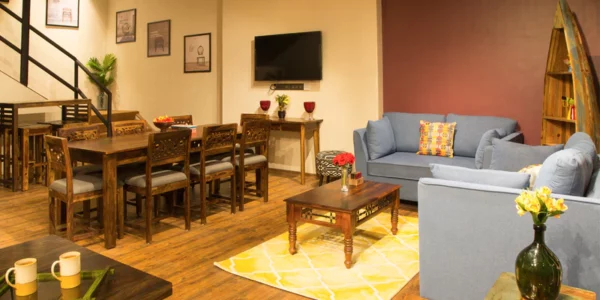How did Pepperfry become the Leading Online Furniture Company?
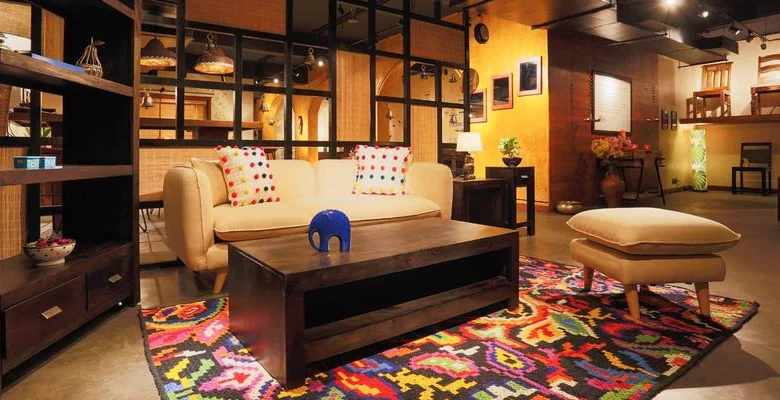
How did Pepperfry become the Leading Online Furniture Company?
Only a few years ago, purchasing furniture was a time-consuming process. But Pepperfry is helping to fill that gap. To find a specific style or quality of furniture, you must either run from showroom to showroom quickly or order it custom-made at a higher cost while being reliant on the carpenter or the shop. Even after running from pillar to post and waiting for your purchase, you can still recall being dissatisfied with the furniture’s quality, the design, or the exorbitant price.
But now, the procedure is significantly less complicated. Today, you can easily choose any piece of furniture you like online, have it shipped to your location, have it built and installed at your convenience, and all of this can be done without any difficulties. These benefits have led to an increase in the number of people choosing to buy furniture online.
The value of the online furniture market, which boasts a CAGR of over 35 per cent, was $25.7 billion in FY20. One such business responsible for the rising acceptance of online furniture shopping among Indians is Pepperfry.
Pepperfry, founded in 2011, provides fashionable, high-quality furniture with tempting EMI alternatives. The company offers everything you need to turn your apartment into a home and your dream home, including electrical appliances and wall art. Let’s look at this new business that has effectively been associated with gorgeous residences!

About Pepperfry
Ambareesh Murthy and Ashish Shah started Pepperfry, the largest online furniture retailer in India, in 2011. But it was initially developed as a horizontal online marketplace with a lifestyle and fashion focus. Yes, Amazon hadn’t yet made an impact in the Indian markets, and Flipkart was just another e-commerce startup at the moment. The company’s former venture was successful initially, but gradually the profits dried up. As a result, the company decided to quit and focus on a profitable niche model involving the online sale of furniture and home furnishings.
The company Pepperfry now focuses on and sells products in the home decor categories of furniture, lighting, kitchen appliances, housekeeping, bath accessories, dining, etc.
This online retailer provides a huge selection of goods that provide customers with a fantastic experience. Thanks to their offerings and delivery system, they are the top brand in their category. The corporation had more than 4.5 million registered users and subscribers, over 7 million monthly visits to its website, and over 10,000 vendors on staff.
When Pepperfry first launched, it offered products in a variety of lifestyle categories. However, after a year, in 2013, Pepperfry changed its focus and began selling just furniture, home décor, and related items online. Pepperfry has established over 60 Pepperfry studios in more than 18 Indian locations, with a Mumbai headquarters. These studios showcase a variety of furniture so that potential buyers may see and touch it before placing an order.
Despite Furlenco and Instamojo holding the majority of the market, Pepperfry launched a furniture rental service in September 2018 in Mumbai, Bengaluru, Delhi, Gurgaon, Hyderabad, Pune, Chennai, Noida, and Ahmedabad. This firm offers 1200+ products for rent for a duration of 6, 9, or 12 months and targets the urban demographic between the ages of 25 and 35. It collaborated with online classifieds website Quikr in 2018 to launch a furniture exchange service.
Pepperfry takes special pride in its omnichannel capabilities, which let customers place orders whenever and wherever they want from any channel or device. This is made feasible by the availability of mobile and online platforms, which allow customers effortlessly transition between them during any stage of the purchasing process.
Trendsutra Platform Services Private Limited owns Pepperfry. It provides reduced lifestyle products for online retail sales, including clothing, furniture, jewellery, personal care products, and home décor items.
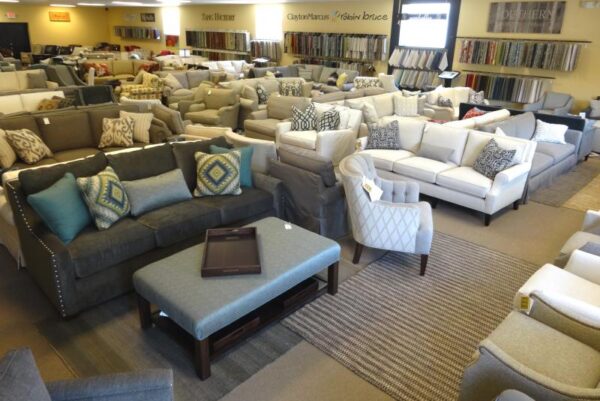
Industry
India’s online furniture market is expanding with a CAGR of a robust 39%. The online furniture market increased from $275 million in CY2019 to $400 million in CY2020. This market is anticipated to increase by 3X over the next five years, with a 1.8X increase in the average annual consumer spending.
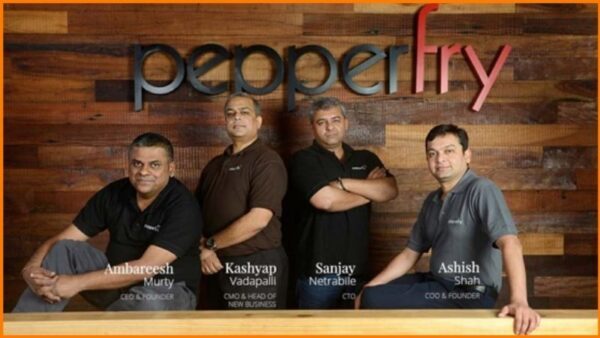
Founders and team
Ambareesh Murty and Ashish Shah are the founders of Pepperfry. Peppefry co-founders Ambareesh Murty and Ashish Shah were colleagues from e-bay.
Ambareesh Murty
Ambareesh Murty, the CEO of Pepperfry, has an MBA from IIM, Calcutta. He had experience with Britannia, ICICI Prudential, and Cadbury. Ambareesh held the positions of Vice Chairman of the Internet and Mobile Association of India and Country Manager for eBay in Malaysia, the Philippines, and India (IAMAI).
Ashish Shah
The Institute of Management Technology, Ghaziabad’s Advanced Diploma in Materials Management was earned by Pepperfry’s COO, Ashish Shah. He graduated from the University of Pune with a degree in chemical engineering. Ashish started his career in 1998 as the Branch Sales Manager for Tradox Pigments & Chemicals. He later worked for organisations including ChemB.com India, C1 India Pvt Ltd, Baazee.com, and eBay, where he oversaw sales and operations before founding Pepperfry.
The team’s core members are Sanjay Netrabile, the Chief Technology Officer of Pepperfry, and Kashyap Vadapalli, who has been serving as the Chief Marketing Officer and Business Head.
How was Pepperfry Started?
Former employees of eBay India Ambareesh Murty, Ashish Shah, and Niren Shah had lunch together in 2011 at Niren Shah’s office in Mumbai’s Nariman Point. Ashish Shah oversaw the office’s cars and social shopping division at the time when Murty served as eBay India’s country manager. Niren Shah had previously left the company in 2007 to become the managing director of the investment firm Norwest Venture Partners.
That day, Murty and Ashish Shah decided to tell Niren Shah about their ambitions to create a lifestyle e-commerce business centred around paper napkins while they were eating lunch. Niren Shah immediately liked the concept. This lunch conversation eventually led to the creation of Pepperfry, an online platform for home design and furniture.
In 2011, Murty and Shah, the company’s founders, decided to launch. They then attempted to update their Linkedin accounts in accordance, starting by changing the text on their profiles to “starting up.” Soon after, they expanded to a team of six, and the business, which had previously relied solely on the founders’ personal equity, received an official commitment of $5 million from some VCs. Despite being in the term sheet, the deal did not go through in this instance.
The founders had previously committed their entire life savings and were strangely left stranded at a time when the brand lacked a name and cash. However, Murty and Shah didn’t give up and instead convinced 25 others to take a vacation to Goa during their entire stay there. The founders didn’t want to miss the last chance to enjoy themselves; thus, this was a difficult and intriguing move.
The Series A fundraising round, which helped Pepperfry raise almost $5 million, was the eventual silver lining. As a result, the crew felt waves of passion and motivation, and the business hasn’t had to turn back since.
Business Model and Revenue Model
The founders had previously committed their entire life savings and were strangely left stranded at a time when the brand lacked a name and cash. However, Murty and Shah didn’t give up and instead convinced 25 others to take a vacation to Goa during their entire stay there. The founders didn’t want to miss the last chance to enjoy themselves; thus, this was a difficult and intriguing move.
The Series A fundraising round, which helped Pepperfry raise almost $5 million, was the eventual silver lining. As a result, the crew felt waves of passion and motivation, and the business hasn’t had to turn back since.
The business model of the organisation underwent some changes in 2014. Pepperfry launched its retail outlets under the moniker Pepperfry Studios in addition to its website and app. More than 500 cities have received deliveries from the business to date, and it is still growing its market share.
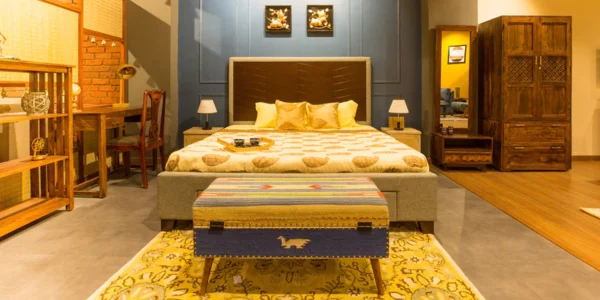
Funding and Investors
Pepperfry has raised $280.24 million in total (November 2021).
On November 23, 2021, 47 investors, including Norwest Venture, General Electric Pension Trust, and other family businesses and trusts, contributed $40 million to a debt capital round for Pepperfry. On February 12, 2021, Pepperfry received its last fundraising when InnoVen Capital contributed around $5 million to the company.
Before its impending IPO, Pepperfry plans to raise up to $300 million through selling new stock and a secondary offering of shares.
In 2018, State Street Global Advisors, the asset management division of State Street Corporation, one of the biggest investment management companies in the world, provided capital to Pepperfry in the amount of Rs 250 crore. This was one of the largest sums of money ever raised in India by an online furniture and household goods retailer.
The money raised expanded Pepperfry’s logistical network from 500 to over 1,000 cities and opened more Pepperfry Studios, or experience centres, in smaller cities and towns.
With the help of preexisting investors Goldman Sachs, Bertelsmann India Investments, Norwest Venture Partners, and Zodius Technology Fund, Pepperfry was able to secure Rs. 210 crores in a Series E funding round in 2016.
Goldman Sachs Group Inc. and Zodius Technology Fund sponsored a $100 million (about Rs. 600 crore) Series D fundraising round for Pepperfry in 2015. The round included current investors Bertelsmann India Investments and Norwest Venture Partners. The money was used to extend the company’s distribution network, which consists of a fleet of over 400 vehicles, to reach out to additional small towns and cities. In its second round of funding, the company received $15 million (about Rs. 90 crore) from Bertelsmann India Investments and Norwest Venture Partners.
Pepperfry Shareholding Pattern
The shareholders of Pepperfry are as follows:
- Norwest Ventures – 29.40%
- Broad Street Investments – 21.09%
- Bertelsmann – 18.64%
- General Electric Pension Trust – 12.29%
- Ambareesh Murty – 4.35%
- MBD Bridge Street – 3.92%
- Panthera Growth Fund – 3.61%
- Madhubala Ventures – 2.15%
- Ashish Shah – 1.45%
- Cayman Holdings – 1.33%
- Indiblu Investment – 1.10%
- Stonebridge – 0.56%
- Vedantum Family Trust – 0.11%
IPO
Pepperfry has already started restructuring its corporate structure in preparation for its planned market listing. Pepperfry was formerly registered in the Cayman Islands but has since been redomiciled in Mumbai to assist it in listing in the US. Additionally, the company is adding independent directors because, in cases where the company chairman is an independent director, unlisted public corporations are needed to reserve at least 33 per cent of their directorships for independent directors.
This year, in 2022, Pepperfry will most likely submit its draught red herring prospectus to SEBI. The Pepperfry board’s resolution in May 2022, Pepperfry has already become a public business. This changed the name of Pepperfry to Pepperfry Limited.
Partnership and Tie-ups
In July 2018, Pepperfry partnered with Zefo, an online marketplace for previously owned furniture, to allow customers to exchange their old furniture for Pepperfry gift cards by selling it to Zefo. These gift cards can be used to pay for Pepperfry purchases.
Pepperfry introduced the “Privilege programme” to increase its customer base by collaborating with roughly 1,400 architects and interior designers. By the end of 2018, the initiative will have 10,000 partners.
In addition, Pepperfry collaborated with Rajasthan Royals for IPL 2015 to promote its name and boost user interaction and revenue.
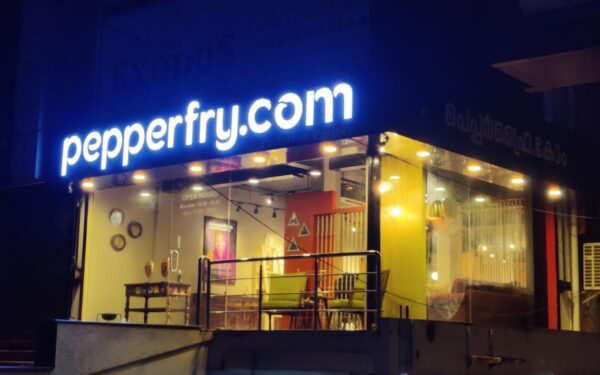
Growth and Revenue
Despite being one of today’s budding online furniture merchants, Redseer assessed Pepperfry’s market share to be just 3.5 per cent of the $20 billion overall market. The Indian furniture market as a whole is predicted to reach $37.72 billion by the end of 2026, while Pepperfry, with a market share of about 3.5 per cent, is expected to reach $1.32 billion by then.
According to Pepperfry, it has over 21 distribution hubs and over 400 cars in its fleet. Pepperfry now provides more than a million home goods, including coffee tables, beds, bedsheets, and lamps, and it ships to more than 500 Indian towns. Over 14 warehouses are owned by the corporation nationwide. They say their Padgha warehouse, located north of Mumbai, is India’s largest.
On May 20, 2022, Pepperfry officially became a public corporation and is now prepared to go public. The company’s board of directors approved Pepperfry’s conversion to a public organisation, giving it the new name Pepperfry Limited.
Revenue and Financials
Compared to the Rs 193.26 cr that the company reported in FY19, Pepperfry’s operational revenue for FY20 was Rs 246.03 cr or almost 27% more. Additionally, the business significantly reduced its losses from Rs 183.49 cr in FY19 to Rs 117.4 cr in FY20. This represents a 33.3 per cent decrease. Operating revenue for the company was Rs 203.4 cr, a decrease of roughly 14% from the prior year. But, the company managed to bring down its losses, which were recorded at Rs 47.2 cr in FY21.
Awards
- Pepperfry has conferred the “2012 Red Herring Asia Top 100” award, honouring the most promising private tech ventures from Asia.
- At the Indian e-Retail Congress 2014, the company was named “Pure-Play e-Retailer of the Year,” honouring exceptional achievement and retail innovation.
- For its outdoor campaign, “Happy Furniture to You,” Pepperfry earned the Gold medal at the Neons for Best Creative in the Retail Advertising category.
Startup Challenges
Before coming up with a name, Pepperfry had had many financial difficulties. The logistics presented the next significant challenge. Furniture cannot simply be picked up from the closest shop and delivered to the consumer like pizza. A minor blemish can detract from the furniture’s overall charm. The business initially used outside service providers for logistics. However, the services offered by these independent contractors were pitiful.
According to the creators, if the purchased products did not fit in the elevator, third-party delivery services occasionally even left the packages in building lobbies. These things prompted Pepperfry to start its own internal logistical services to have the goods delivered on time and undamaged.
While the global average is 6 per cent, according to Ashish, Pepperfry’s damage rate between production and client delivery is below 2 per cent.
In addition to all these challenges, it takes incredible skill to turn the entire unorganised sector online and create a niche market for furniture and furnishings.
Competitors
- Homelane
- Urban Ladder
- GoRootz
- Livspace
- Furlenco
- Rentickle
- RentoMojo
- GrabOnRent
- CityFurnish
The entrance of Ikea, the biggest furnishing retailer in the world, is a further cause for anxiety. In 2018, the Swedish retailer set up shop in India. Ingvar Kamprad, the company’s creator, offers a captivating background narrative about going from nothing to something.
Future Plans
The business has already had notable success and has benefited the furniture and home furnishings sectors. For customers to visually place the products in their homes and subsequently make judgments, the company has lately included augmented reality (AR) functionalities. The business plans to continue using such technological developments in the future. Because it could win its customers’ trust, Pepperfry could dominate the Indian market.
To increase the variety of its collection, Pepperfry plans to pursue local and regional furniture makers in addition to the top global manufacturers of furniture and home décor in 2021. In the future, the organisation intends to collaborate with several local and regional players.
The firm in online furniture selling plans to go public in 2022 and will probably soon submit its DHRP with SEBI as of July 30, 2022. The founders declared, “This would be the right thing to do next as we are producing a profit.”

